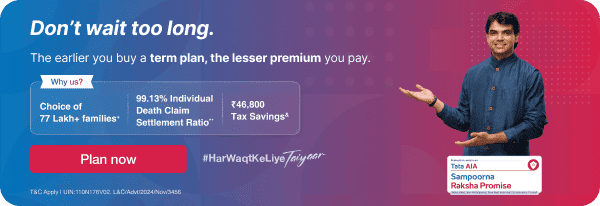10 Year Term Insurance Plan
Life is a beautiful journey, filled with moments of joy, accomplishment and love with your loved ones. While enjoying this beauty, we must prepare for life’s uncertainties by protecting and securing the future of our loved ones.
This is where a term insurance policy comes into the picture. Just imagine the peace of mind of financially protecting your family with an extensive sum assured. Term insurance plans are a promise that ensures your loved ones continue to live their dreams even if you are not there to see them through.
Term plans offer pure protection for a particular number of years where family members are guaranteed a sum assured payout. While longer tenures are always popular with term insurance, you can also buy a 10-year term insurance plan.
Hence, if you are looking for a way to safeguard your family from a loss of income, a 10-year term insurance plan can be the perfect solution. Tata AIA’s 10-year term policy can be your trusted partner in securing your family’s future.

 FOR EXISTING POLICY
FOR EXISTING POLICY  1860 266 9966
1860 266 9966
 FOR NEW POLICY
FOR NEW POLICY 








 Compare Plans From Different InsurersThere are several online life insurers. What you need to assess are the services they offer with respect to the coverage and price you will need to pay for their 10-year term insurance plan.
Compare Plans From Different InsurersThere are several online life insurers. What you need to assess are the services they offer with respect to the coverage and price you will need to pay for their 10-year term insurance plan.